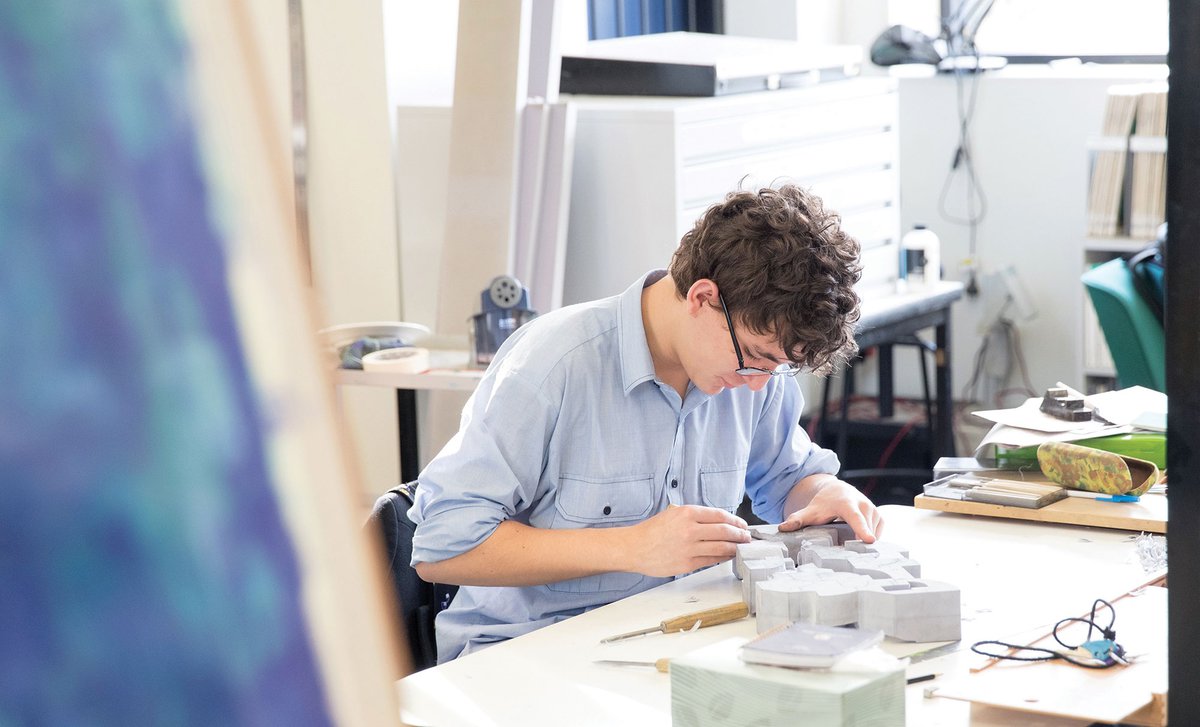
Technical skill and a focus on the importance of drawing underpinned this year’s cohort of HSC Visual Arts candidates, reports Subject Master Mark Wilde.
A large gathering of boys, parents and friends came together once again this year for the opening night of the HSC Art exhibition. Senior boys commit to a specialist studio in Form V and begin the process of developing their skills and undergoing the challenge of working independently on ideas driven by their own interests and experiences. By the time they start their final year they are technically well rehearsed, and all that remains is for ideas to form and, most importantly, continue to evolve as the work progresses. As has been the case for some years now, all four studios made significant contributions to an exhibition that reflected both diversity of interest and an extraordinary technical skill across all disciplines. This year, nineteen boys filled the gallery space with work that addressed eight of the twelve disciplines offered by the Board of Studies.
In 2016, Noah Soderlund and Curtis McMillan exhibited welded metal sculpture, a first for the department. This year Tom Staines made his own mark on welded metal by producing three very different works inspired by the traditions of landscape, still life and the human form. Arkie Owen carved and revealed something of his process by developing a suite of relief prints to accompany his three carved pieces, while Jagen Yoon challenged himself to draw, print and sculpt in an attempt to again reveal a rigorous academic process while addressing an underlying personal theme. The ceramics studio was represented by Oliver Owens who made twenty-five cylinders and daringly placed brilliantly coloured brush marks over their surfaces in a manner similar to American abstract expressionist Cy Twombly.
The work emerging from the 2-D studio was once again underpinned by an emphasis on drawing, whether it revealed itself through painting, as in the case of Andrew Chan, Dion Stauber and Conor Clift, or more obviously, in the capable hands of Nick Docker, Matthew Fischer, Garth Russell and George Mei, who worked with a mix of charcoal and graphite. Luke Hawthorn presented a sensitive series of pencil drawings in the manner of a natural history display case, which provided him with the perfect opportunity to work in remarkably fine detail.
It was encouraging to see that films made by Miles Gibson and Max Jelbart last year were so influential as to inspire Alex Magiros, Daniel Kim and Charles Sics to follow in their footsteps, albeit with different subject matter and very different styles. Isaac Spigelman also contributed to the studio’s output with a short animated film, supported by a series of charcoal drawings which revealed something of his process. Robert Hao, Jamie Whatling and Yuta Ito stayed loyal to the traditions of the studio by submitting photomedia pieces.
Dr Malpass enthusiastically accepted our invitation to open the exhibition, as his predecessor Dr Vallance so fervently did before him. In doing so, Dr Malpass not only revealed more than a passing interest in art, but a sensitive and perceptive insight into the variety of work on show. Dr Malpass will indeed be invited back in the same capacity!
There are two Form VI prizes awarded annually in the visual arts category: The Ranger Prize for Art, acknowledging the overall achievement of a boy who has excelled in both art history and practical courses, with the recipient this year being Arkie Owen. The John Cattanach Prize for Distinction in Fine Art recognises the allround excellence of a boy’s practical work, but also his involvement and contribution to the life of the department. This prize was awarded to Jagen Yoon (Collection of Works – drawing, printmaking and sculpture).





